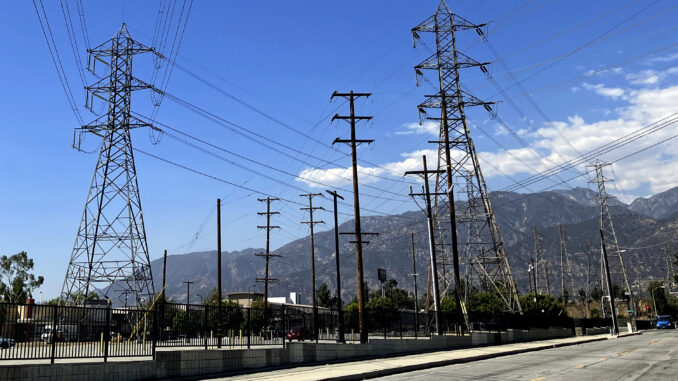
Western power forwards are trending higher down the curve following higher gas forwards with forecasts of above-normal temperatures, as spot prices climbed in August on summer heat.
Across the Western power markets, several October and November power packages averaged about 60% above their 2021 counterparts, according to S&P Global Commodity Insights data. Power forwards down the curve climbed higher at the end of August.
Forwards curve
Mid-C on-peak September rolled off the curve at $149.90/MWh, 128% above the 2021 package a year ago, after averaging 31% higher throughout August, according to S&P Global data. On-peak October averaged 64% above its 2021 counterpart in August and reached as high as 96% higher by the end of the month, while on-peak November averaged 59% higher in August and climbed to 82% higher on the last day of the month.
Likewise, COB on-peak October averaged 60% above its 2021 counterpart a year ago for August and ended the month 89% higher, while Palo Verde on-peak November averaged 60% above its 2021 counterpart last year at the same time for August and reached as high as 71% above by the end of the month, according to S&P Global data.
The three-month outlook indicates a greater probability for above-normal temperatures across most of the western US, with equal chances for above- or below-normal temperatures in the Northwest, according to the US National Weather Service.
In gas forwards, SoCal city-gate September rolled off the curve 99% higher than its 2021 counterpart did, as the October package is currently 42% higher and November is 24% higher, according to S&P Global data.
Spot market
In the spot market, Western wholesale power prices averaged 64.5% higher year on year for August.
Palo Verde on-peak day-ahead averaged $121.59/MWh in August, 81% higher year on year, according to S&P Global pricing data. Prices reached as high as $225/MWh Aug. 31, an 11-month high.
SP15 on-peak day-ahead locational marginal prices averaged $110.86/MWh in August, 76% higher year on year, according to California Independent System Operator data. Prices climbed as high as $181.51/MWh Aug. 31, an 11-month high.
In spot gas prices, PG&E city-gate averaged $9.767/MMBtu in August, 83% higher year on year, as prices reached as high as $10.735/MMBtu Aug. 24, a 42-month high, according to S&P Global pricing data. Sumas averaged $8.105/MMBtu, 118.5% higher than a year ago, and reached as high as $8.860/MMBtu Aug. 24 an eight-month high.
Power prices climbed at the end of the month in anticipation of a Labor Day week heat wave that caused CAISO to issue multiple calls for conservation, as well as restricted maintenance operations, energy emergency alert watch, EEA 1, EEA 2, transmission emergency and led to a new peakload record. CAISO set an all-time peak demand record of 52.061 GW Sept. 6, surpassing a 16-year record by 3.6%.
Weather impacts
While to-date September population-weighted average temperatures across CAISO’s footprint have averaged 10% higher than normal, August averaged temperatures were about 1.8% higher than normal and 2.8% higher than a year ago, according to CustomWeather data. The higher temperatures caused population-weighted cooling degree days to average 24% higher than normal and 39% above year-ago levels.
Peakload was up 7% year on year to an average of 40.05 GW in August, according to CAISO data.
Thermal remained the lead fuel source, averaging 42.3% of the total fuel mix in August, up 3.2 percentage points year on year, while important slipped 4 points to average 16.8%, according to CAISO data. Hydro generation increased 1.5 points to make up 6.5% of the mix, while solar fell 2.4 points and wind shed 2.7 points to average 15.9% and 7% in August, respectively.
Farther north, peakload averaged 7.654 GW in August, 8% higher year on year, according to Bonneville Power Administration data. BPA population-weighted temperatures averaged 5.6% higher than normal, leading cooling degree days to average 118% higher, according to CustomWeather data.
Hydro was the lead fuel source at 74.3% of the total fuel mix, up 6.2 points from a year ago, followed by thermal at 9.5% of the mix, down nearly 2 points, and wind at 6.5% of the mix, down nearly 3 points, according to BPA data.



